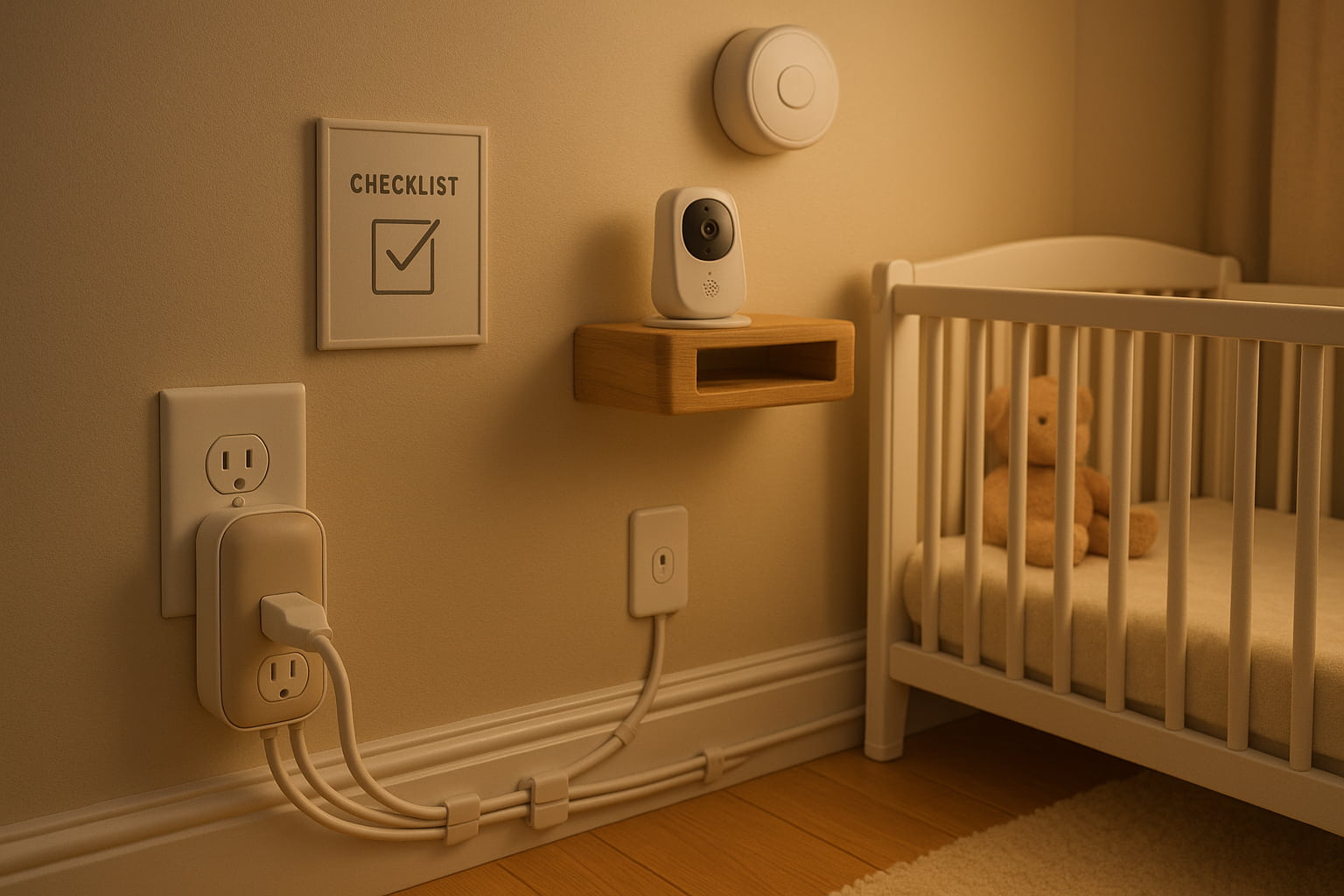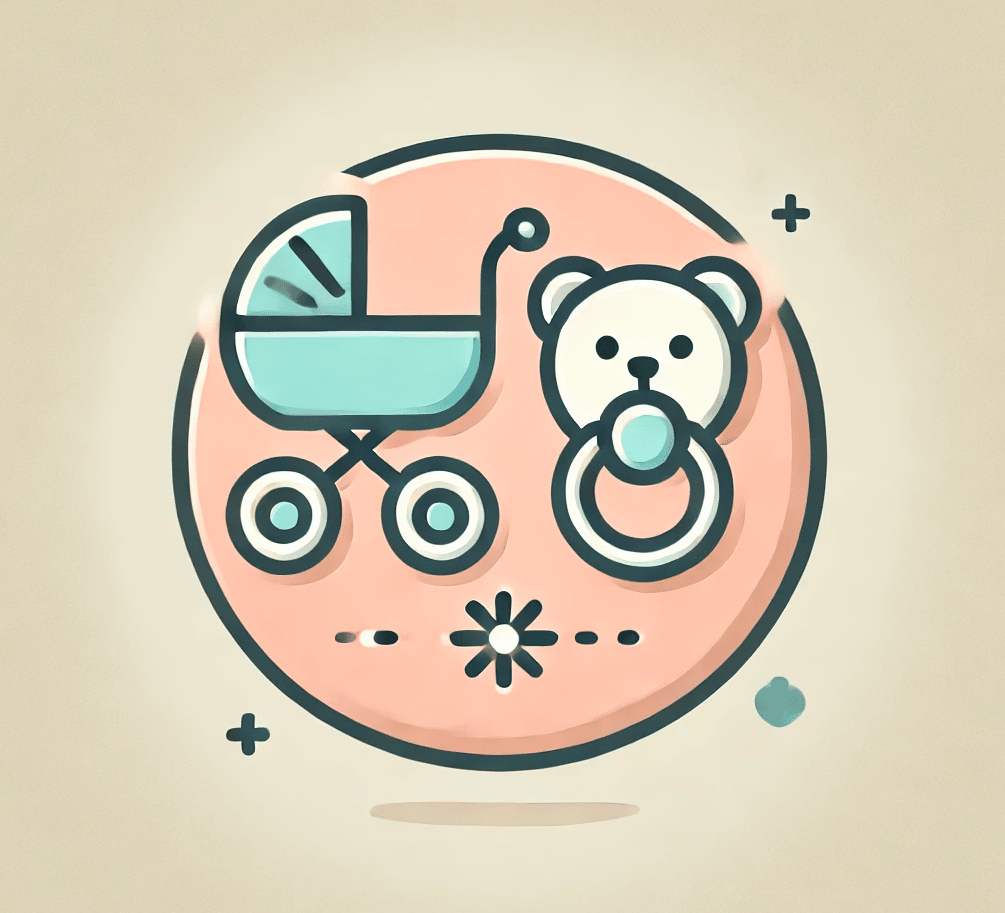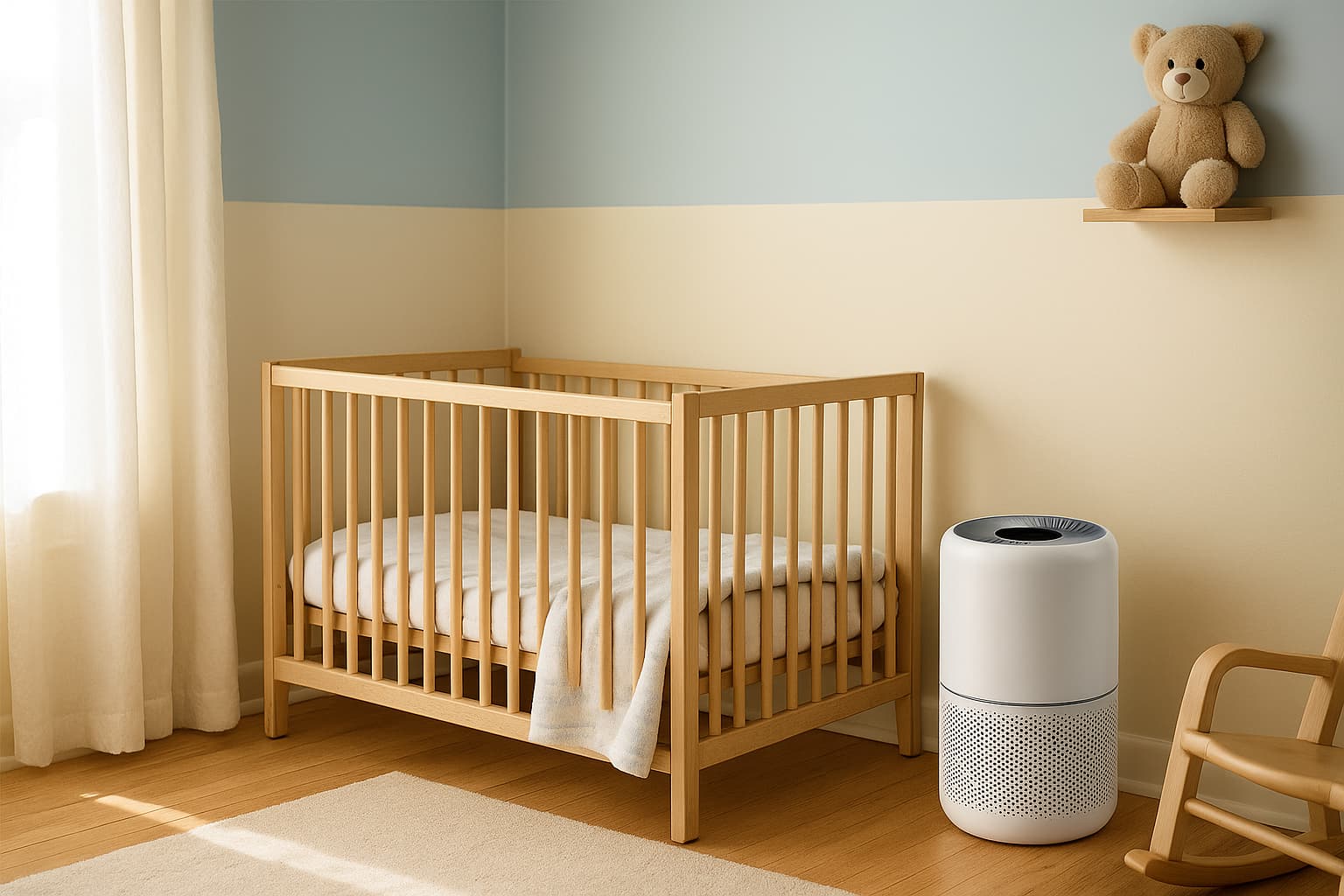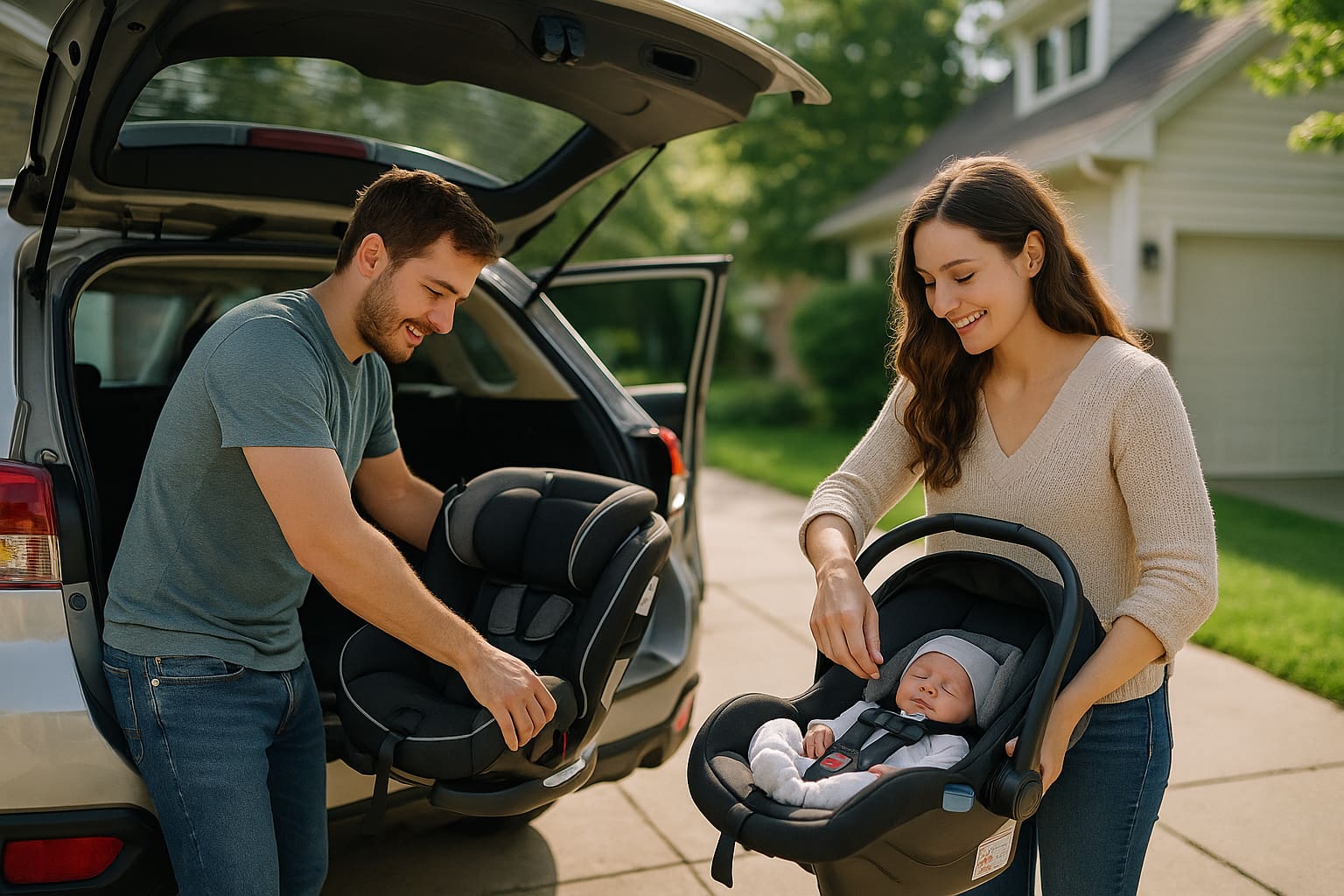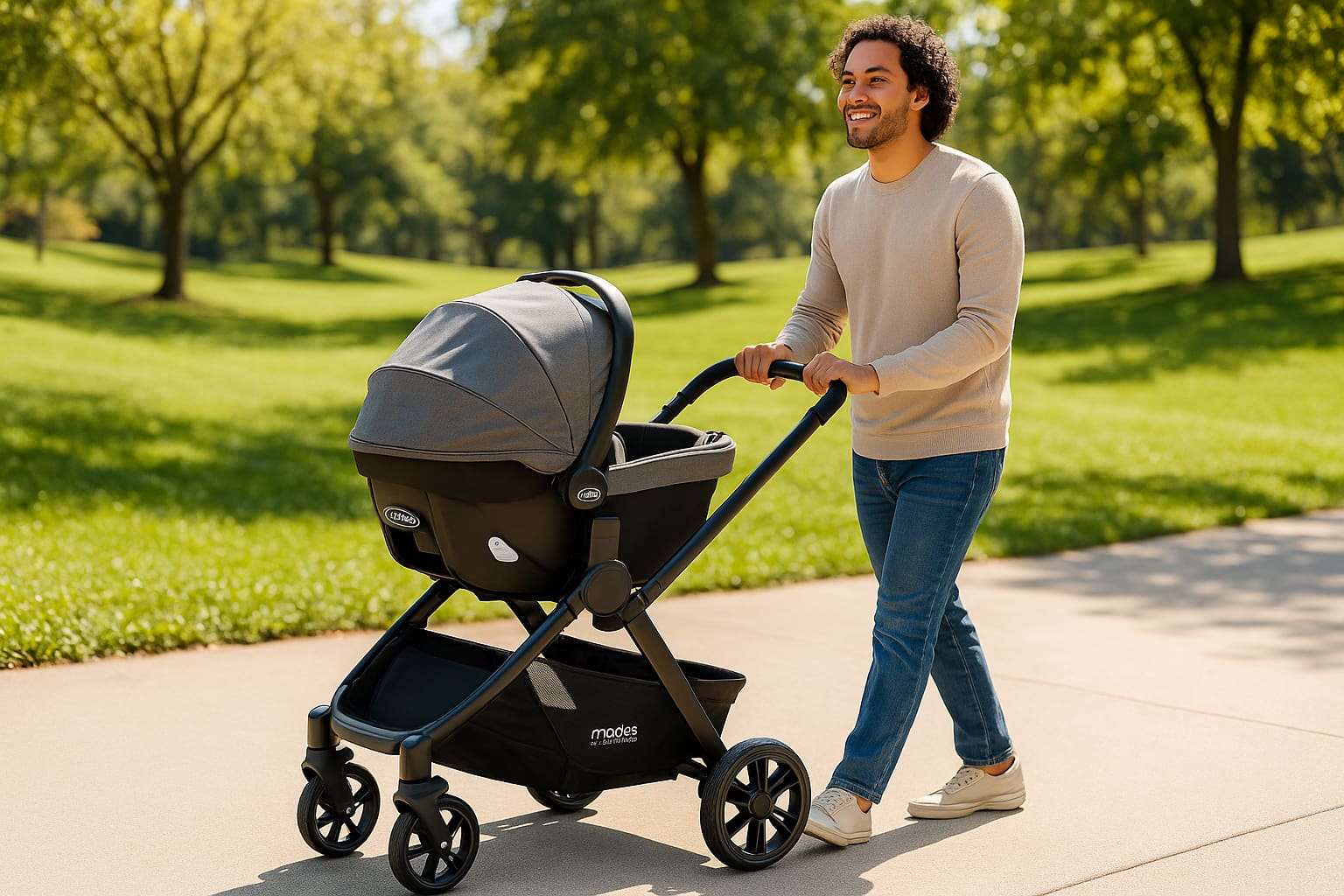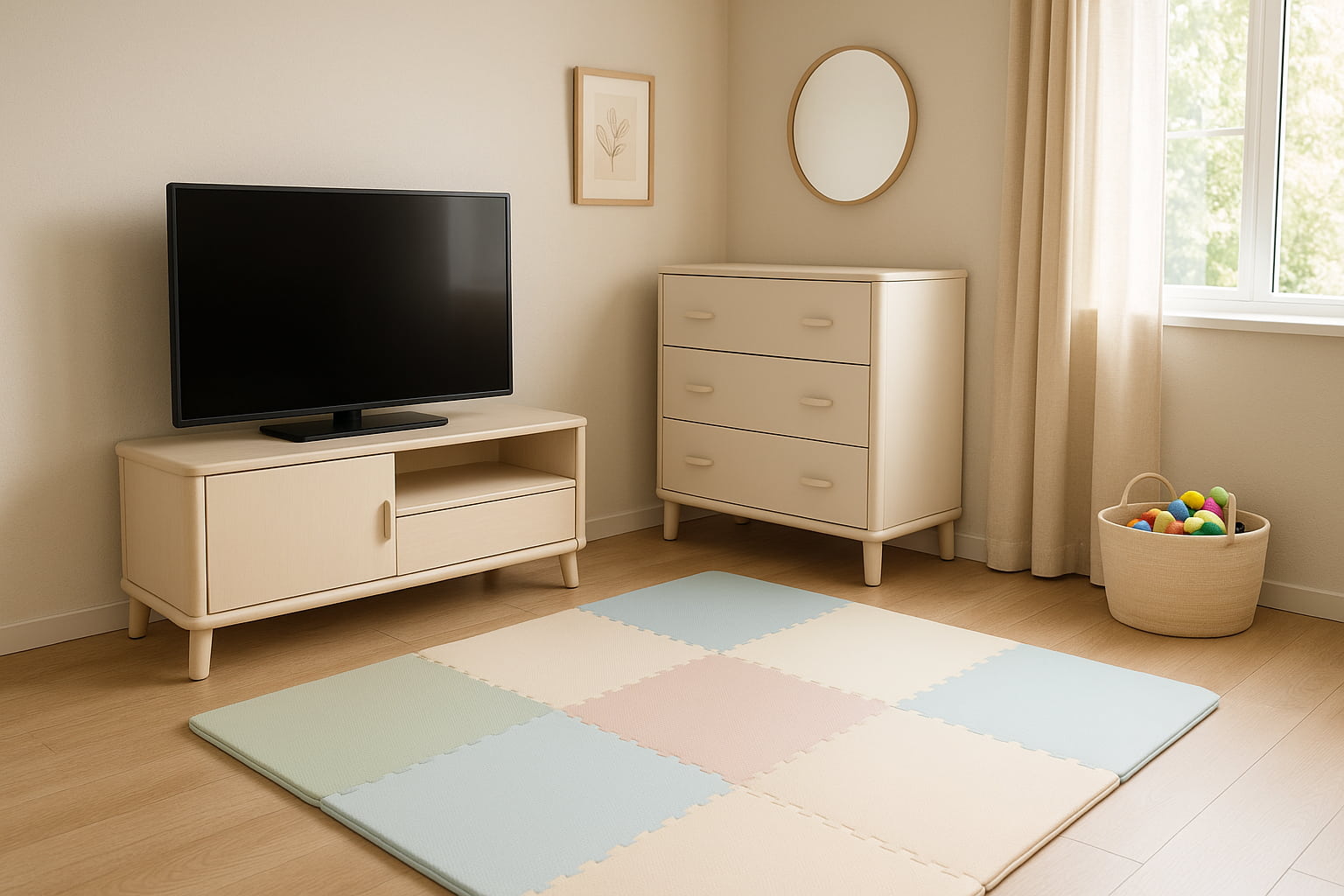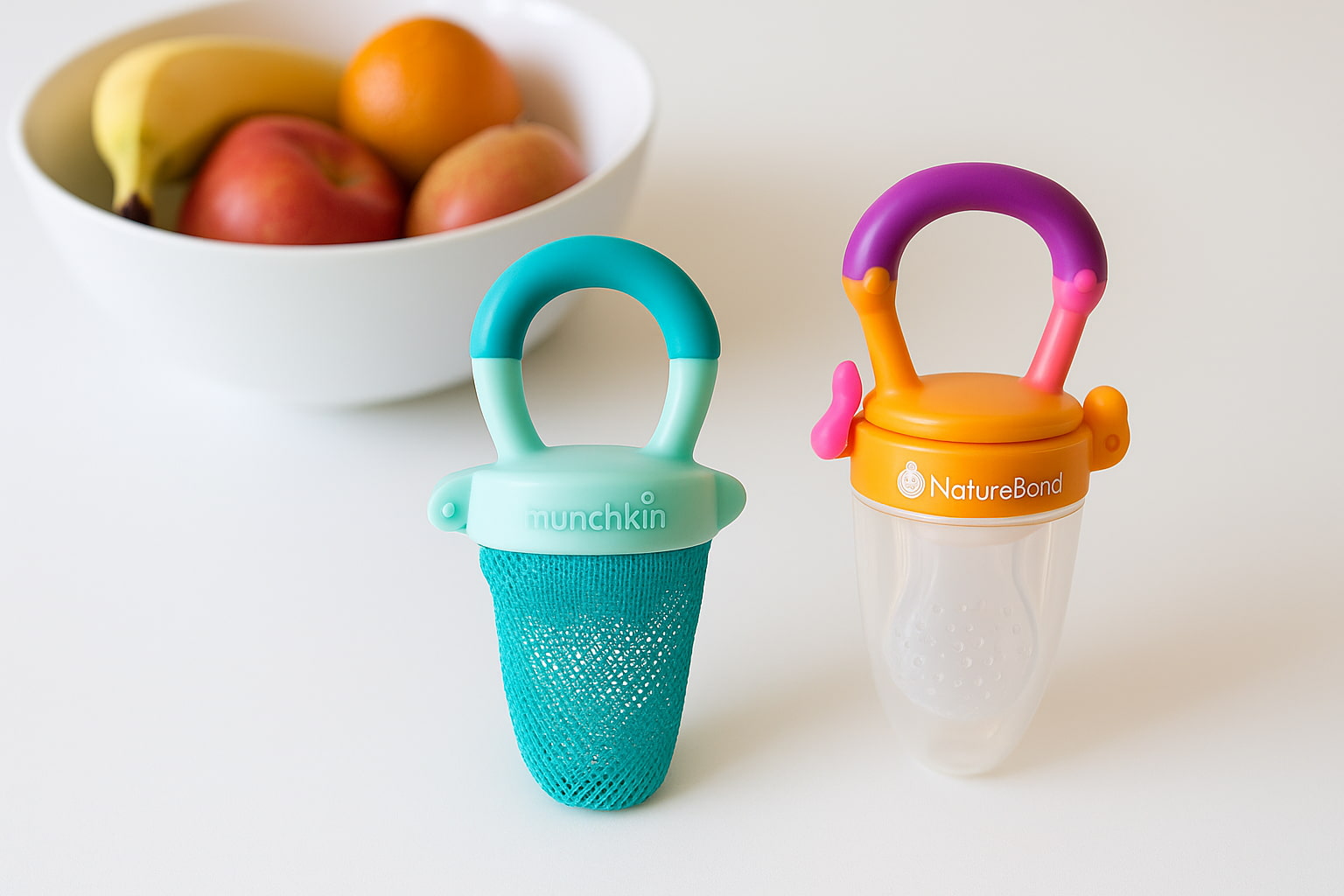Preventing electrical fires in your baby’s room isn’t just smart, it’s necessary. Many parents don’t realize how easily a small cord or outlet can turn into a serious risk.
You might have smoke alarms and outlet covers, but that’s often not enough. Warm plugs, tangled wires, and too many baby gadgets in one spot can all lead to fire hazards.
The good news? To fix it, you don’t have to be an expert. With a few simple changes, you can create a space that’s both baby-safe and fire-safe.
In this article, you’ll learn how to prevent electrical fires in baby’s room with easy tips, expert advice, and trusted tools. Let’s make sure your baby’s nursery is safe, calm, and protected from hidden dangers.
⚡ Most Overlooked Fire Hazards in Baby Nurseries
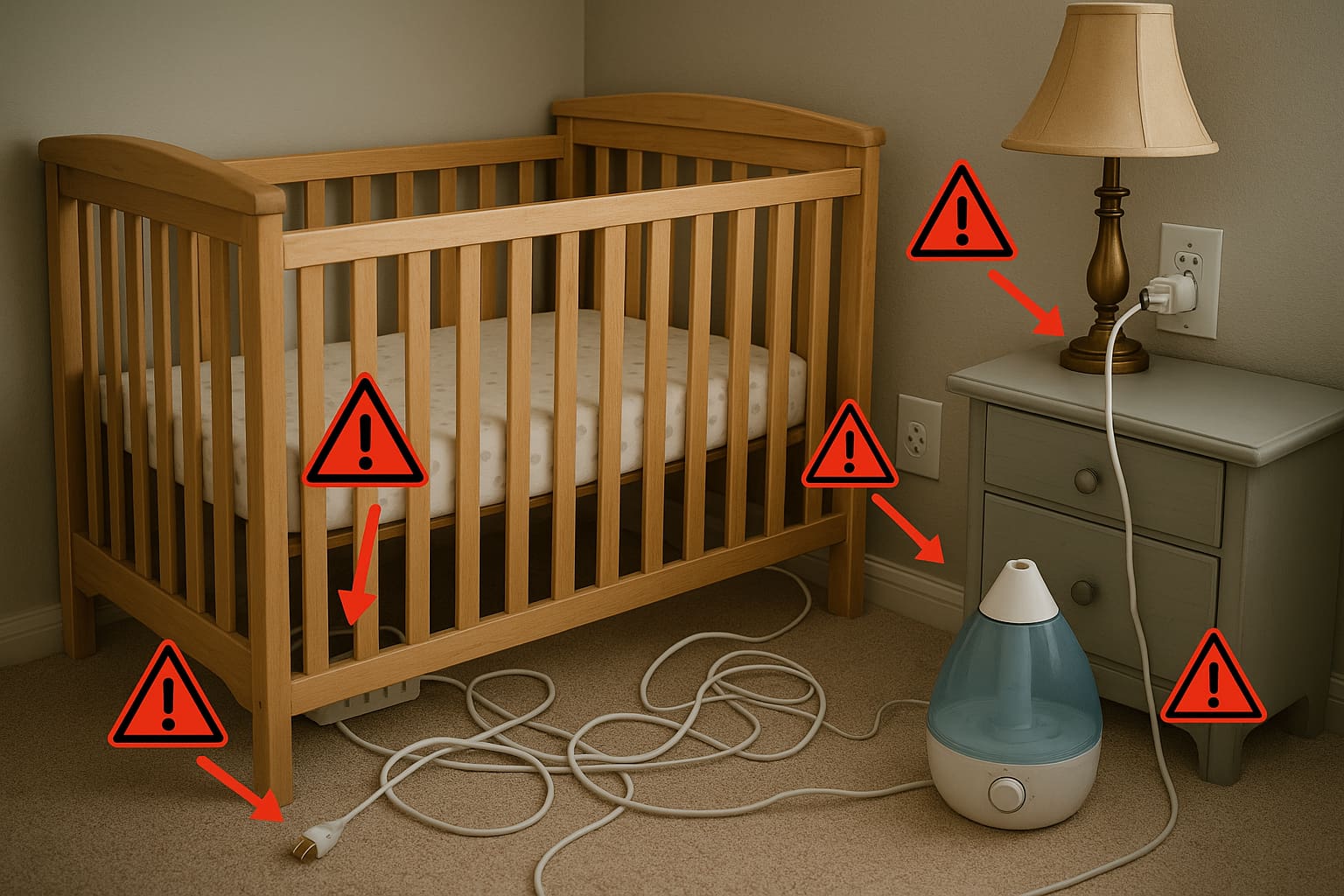
Even the safest-looking rooms can hide real fire dangers. Fire departments frequently respond to nursery-related fire incidents caused by:
🔹 Overloaded power strips behind cribs or changing stations
🔹 Damaged cords or wires from humidifiers, monitors, or bottle warmers
🔹 Extension cords under rugs, causing overheating
🔹 Too many heat-producing devices in one area
🔹 Cheap or untested electronic devices left plugged in overnight
It is frequently too late to recognize these risks. Take a walk through your nursery and look for any of these signs, and then we’ll show you how to fix them.
🧰 How to Inspect Baby Room Outlets and Power Cords
Start by checking every outlet and power cord within your baby’s reach:
✔️ Look for loose or discolored wall plates
✔️ Feel cords, if they’re warm, unplug immediately
✔️ Check that plugs fit snugly (wobbly plugs can spark)
✔️ Avoid using adapters or multi-plug extenders
✔️ Keep all wires visible, never hidden under rugs or behind heavy curtains
Use tamper-resistant outlets or secure outlet covers to block direct access. And for any plug-in gear like a humidifier or night light, ensure it’s UL-certified and doesn’t overheat.
➡ Doing a full cord and outlet check? See what the pros recommend in: Real Firefighter Tips for Baby-Safe Living Spaces.
📡 Are Baby Monitors a Fire Risk? What Parents Must Know
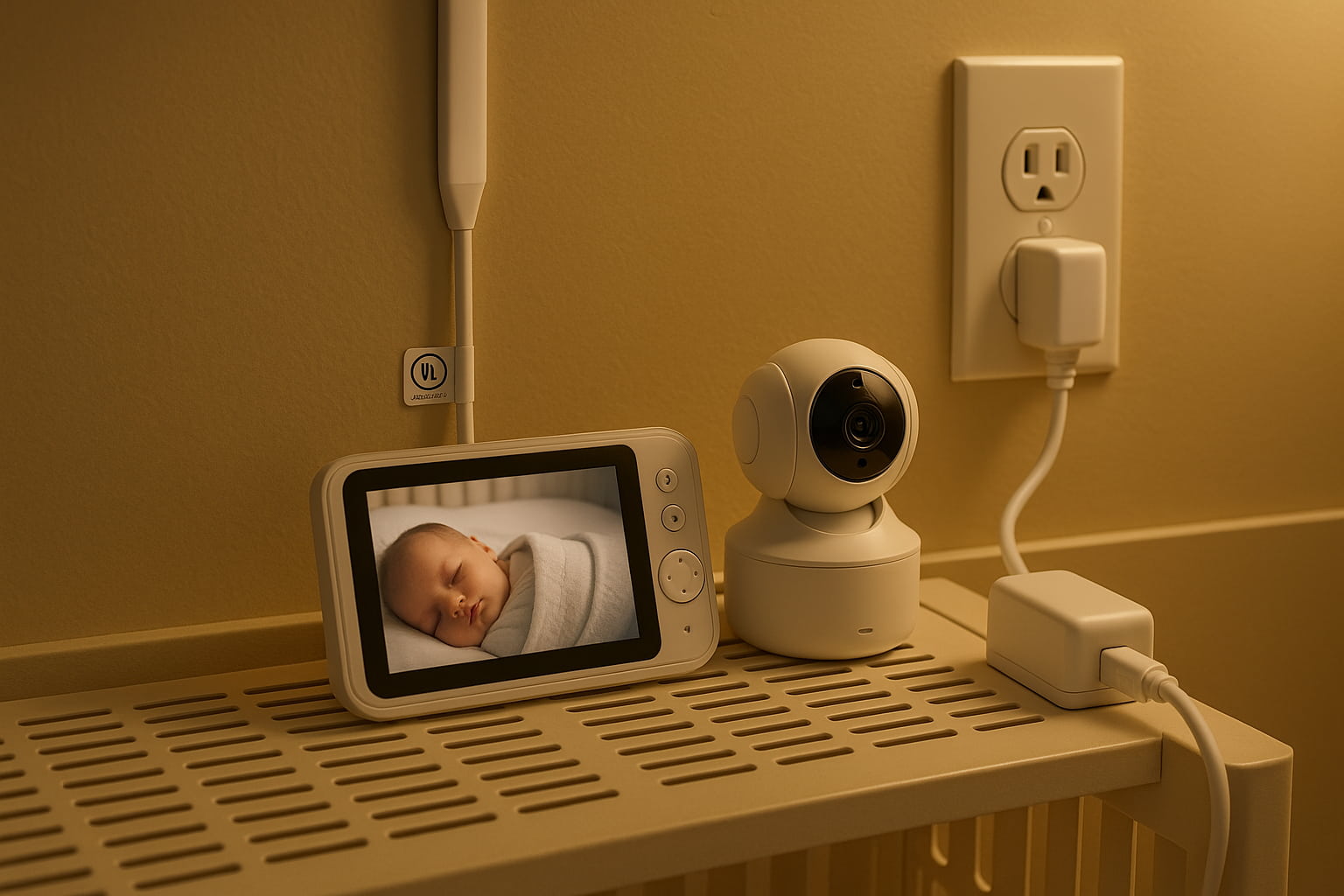
Baby monitors are a must-have for most parents, but they’re not risk-free. Many stay plugged in day and night, often behind furniture or near flammable items. That constant use can lead to overheating or electrical hazards if placed carelessly.
To prevent problems, follow these smart safety steps:
✅ Set the monitor on a firm, open surface, away from bedding or toys.
✅ Use a surge protector, especially in older homes with unstable wiring.
✅ Avoid plugging too many baby gadgets into one outlet.
✅ Inspect the cord regularly for damage or pinching behind furniture.
Used properly, baby monitors are safe. But like any device, they need a little attention to stay that way.
🧱 Choose Fire-Resistant Items for the Baby’s Room
Not everything in a nursery is designed with fire safety in mind. From blackout curtains to foam play mats, many items can burn fast, and that’s a risk no parent wants.
Luckily, choosing fire-resistant materials is easier than most parents think:
🔸 Check for fire-retardant labels on rugs, curtains, and padded mats.
🔸 Avoid foam furniture that is too soft as it can catch fire easily.
🔸 Use UL-certified electronics, especially for nightlights and sound machines.
🔸 Pick snug-fitting covers for power strips or cords to limit exposure.
Fire-resistant doesn’t mean fireproof, but these small choices can buy valuable time in an emergency.
🔌 Best Tools to Help Prevent Electrical Fires in Baby’s Room
You don’t need a full home rewiring to keep your nursery safer. Just a few smart tools can make a big difference in preventing electrical fires.
Here are some essentials that parents swear by:
✅ Tamper-resistant outlets: These block foreign objects from going into sockets.
✅ Cord shorteners or organizers: They prevent pulling, bending, and overheating.
✅ Power strip covers: These stop kids from unplugging or damaging plugs.
✅ Smoke alarms with battery backups: Essential near every baby’s room.
Using the right tools reduces fire risks, without adding clutter or confusion to your space.
➡ Want to level up your setup without overspending? Browse our Cord Covers vs Power Strip Covers – Which Protects Best? for practical advice.
🧑🏫 Train Family Members to Practice Electrical Safety
Even the best safety setup can fail if others in your home don’t follow the same habits. Fireproofing your baby’s room isn’t just a one-person job; it takes teamwork.
Help your family stay consistent with these easy steps:
🔹 Show them the setup: Walk through what’s plugged in and why it matters.
🔹 Set unplugging rules: No unplugging or switching cords unless needed.
🔹 Use visual reminders: Add labels or stickers near sensitive areas.
🔹 Talk safety often: Include safety checks in your weekly routines.
Teaching everyone , even older kids , builds long-term awareness. It also helps avoid small mistakes that can lead to big risks.
🧯 Fact Box: Electrical Fires and Babies
According to the Electrical Safety Foundation International (ESFI), approximately 2,400 children are treated annually for injuries caused by electrical outlets. Many of these incidents happen in homes with faulty wiring or exposed cords.
👨🔧 When to Call an Electrician for Your Baby’s Room
Sometimes, DIY isn’t enough, especially when your baby’s safety is at stake. If you notice any warning signs or have doubts about your home’s wiring, it’s time to bring in a licensed electrician.
Here’s when you should make the call:
⚠️ Frequent breaker trips or flickering lights
⚠️ Outlets feel warm or make crackling sounds
⚠️ Older homes with outdated two-prong outlets
⚠️ You’re unsure about how many devices a circuit can handle
A professional can assess the wiring, suggest upgrades, and install tamper-resistant outlets safely. Getting help from a licensed expert now can stop fire dangers later, especially in busy baby spaces like the nursery.
➡ Unsure about nursery wiring? Get expert input from our Electrician Tips for Nursery Cord Management, which could prevent a major hazard.
🏚️ Signs Your Baby’s Room Needs an Electrical Upgrade
Even if everything looks fine, some nurseries have hidden electrical problems that can increase fire risk. Many older homes weren’t built for today’s tech-heavy baby gear, sound machines, humidifiers, monitors, and more. That’s why knowing what to look for can help you stop trouble early.
Here are clear signs the nursery needs an upgrade:
⚡ Outlets feel warm or spark when plugging things in
🔌 You use multiple power strips just to plug in basic items
🧱 The outlet plates look cracked, burned, or loose
🔁 The breaker trips often when the baby gear is running
If you notice even one of these signs, it’s time to call an electrician. Small fixes now could prevent major problems later, especially in a room meant to protect your baby.
🔌 Can Extension Cords Cause Fires in Baby Rooms?
Yes, and it happens more often than most parents think. Extension cords may look like an easy solution for hard-to-reach plugs, but they can be dangerous, especially in baby rooms filled with gear.
Here’s why they’re risky in baby rooms:
🔥 They overheat when too many devices are plugged in
🪫 Babies may pull, chew, or trip over loose cords
🧯 Old or frayed cords can spark or short out
🚫 Many aren’t designed for permanent use or high-powered devices
If you must use an extension cord, make sure it’s heavy-duty, never run it under rugs or behind furniture, and unplug it when not in use. But the safest choice? Add more outlets or rearrange furniture to reduce the need altogether.
➡ Wondering which setup works best for outlet safety? Don’t miss our guide: Outlet Enclosure vs Strip Covers: 5 Key Differences Parents Must Know.
✅ Final Verdict: Smart Ways to Prevent Electrical Fires in Baby’s Room
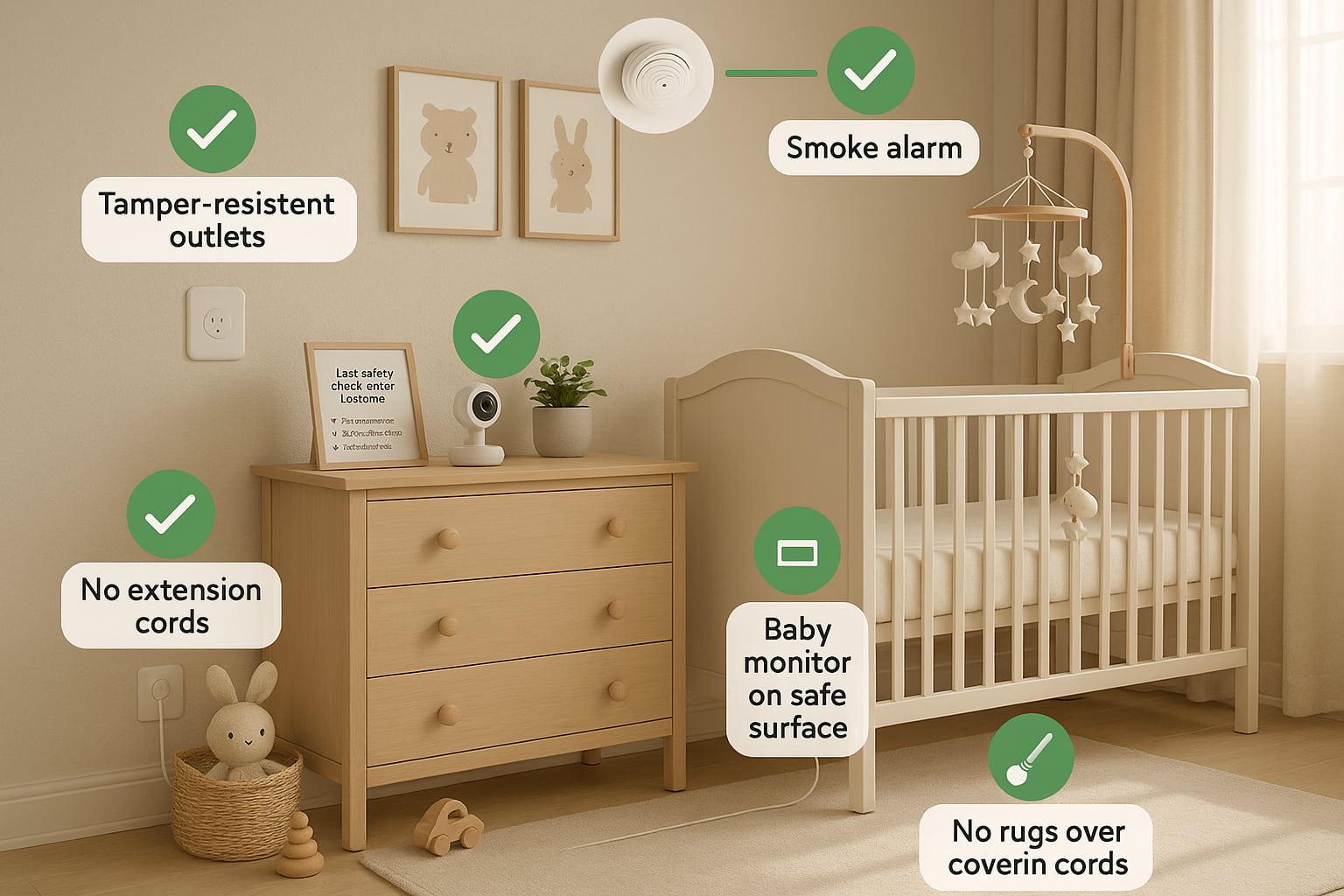
Keeping your child safe isn’t just about locks and covers; it’s also about being smart with electricity. To truly prevent electrical fires in baby’s room, you need more than basic outlet plugs. You need awareness, the right tools, and safe habits.
The good news? You don’t have to be an expert. Small steps, like unplugging unused items, choosing safer products, and checking your cords, can make a big difference. And if anything ever feels unsafe, calling a pro is never a bad idea.
You’re not just babyproofing, you’re building a safer future. Your baby deserves a room that’s not only cozy but also fire-smart. You now understand exactly how to accomplish that.
You’ve got this, and we’re here to help you every step of the way.
❓ FAQs About Preventing Electrical Fires in Baby’s Room
1. What’s the safest way to plug in multiple baby devices?
Use a surge protector with a safety cover, and never plug one power strip into another.
2. Are baby monitors safe to keep plugged in all night?
Yes, if they are kept on hard, ventilated surfaces and checked for overheating regularly.
3. Should I unplug devices during the day if they’re not in use?
Yes. Unplugging unused electronics reduces heat buildup and energy waste.
4. Can I babyproof power strips without removing them?
Absolutely, use lockable power strip covers that allow ventilation but block access.
5. Is it okay to use extension cords in a nursery?
Try to avoid them. If necessary, use short, UL-listed cords and secure them with cord covers.
Disclaimer
This article is for educational purposes only. Always consult licensed electricians and certified safety professionals for individual home assessments.
Writer Byline
Written by Find For Baby, Trusted by parents. Backed by experts. Focused on real-world safety.
